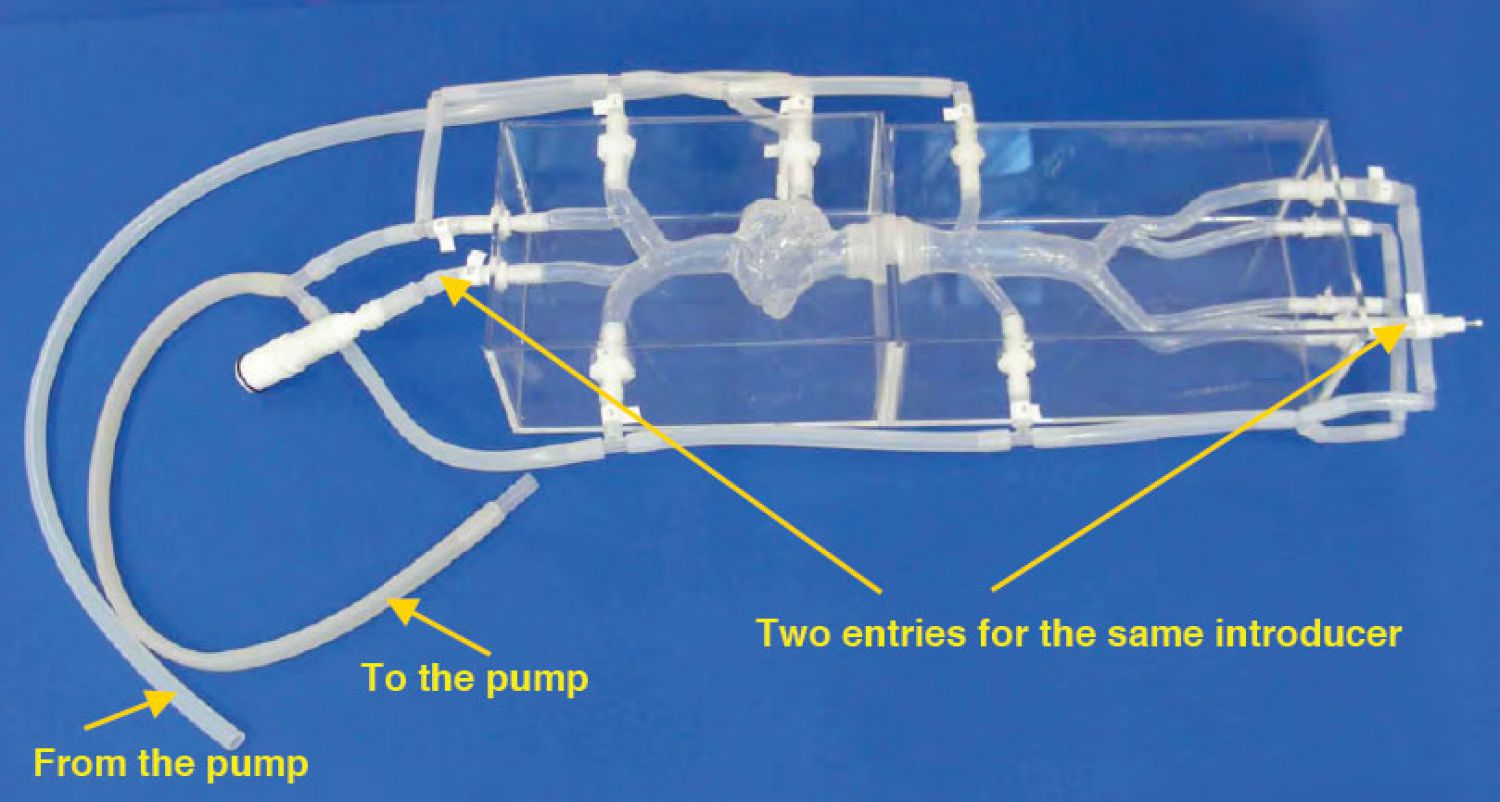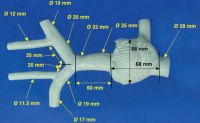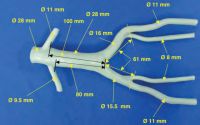-
 VTSN-001 & VASN-001+
VTSN-001 & VASN-001+Veinous model
The veinous heart model is an anatomically designed implantation model composed of the left and right internal jugular veins, L R subclavian veins, superior vena cava, right atrium, renal veins, inferior veina cava, common iliac veins, internal – external iliac veins. This flow model is used to mimic deployment and retrival of endoluminous filters to catch veinous embols. The specific design makes recovery of the implanted device quick and simple. The system also provides the necessary connection to a continuous or pulsatile flow pump in order to create physiologic flow dynamics and wet-lab functionality.
Additionally, the unique design allows a bidirectional approach from the jugular veins or from the iliac veins. The see-through silicon concept supports and enhances interventional training but also provides and ideal platform for deployment of filters and in vitro-testing. All our flow models are compatible with all imaging modalities such as angiographies, CT, MRI and Doppler techniques (with the use of an adequate circulating fluid). The in-vitro model’s transparency to light makes them suitable for video and photographic monitoring.
Box dimensions :
V-T-S-N-001+ thorax model = approx 30cm x 19.5cm x 15cm
V-A-S-N-001+ abdominal model = approx 35cm x 18cm x 15cmV-T-S-N-001 approximative diameters and measures
V-A-S-N-001 approximative diameters and measures

Copyright © Elastrat. All right reserved - LEGAL NOTICE - PRIVACY POLICY
Elastrat Sàrl is a worldwide leader in the development, realization and distribution of human anatomical vascular phantoms.
Our Swiss made transparent soft or rigid silicone phantoms reproduce the anatomical vasculature with its pathologies like aneurysms or stenoses and can be trained through navigation with stents, catheters and coils. They provide a realistic environment for the simulation of endovascular procedures, pre-surgery training, studies and teaching purposes for interventionists, such as interventional cardiologists (neuroradiologists, etc.), interventional radiology-cardiologists, and interventional angiologists.
The models promote safety through education and professional competence.


